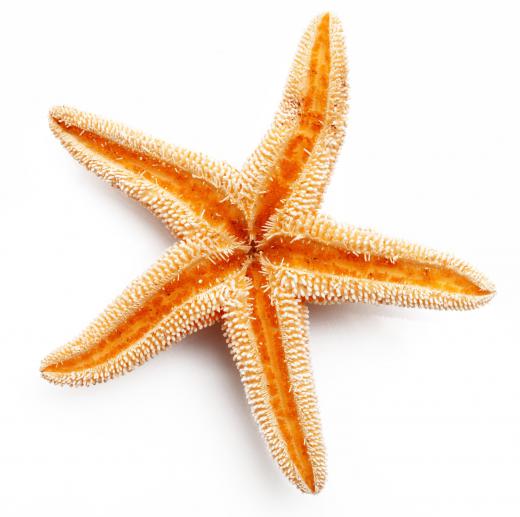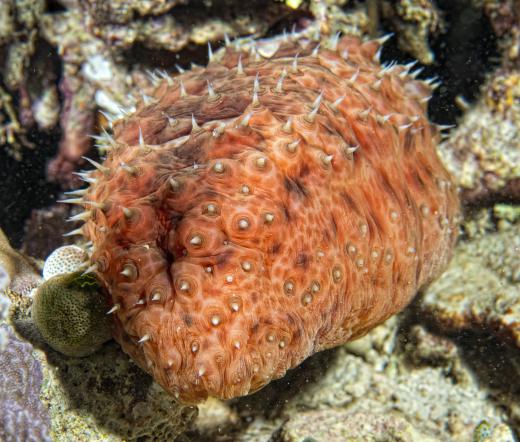What are Echinoderms?
 Michael Anissimov
Michael Anissimov
Echinoderms are a very old phylum of marine animals whose name means "spiny skin" in Greek. This name is a misnomer, however, because not all echinoderms have spines. Their more fitting universal trait is common ancestry, including a unique water-based vascular system, and frequent five-fold symmetry. Though they do not always display five-fold symmetry (sea cucumbers are echinoderms, and they have bilateral symmetry), echinoderms are known for often playing games with the typical bilateral symmetry trend, as in sea urchins (radial symmetry), and the numerous starfish and sand dollars (five-fold symmetry). Echinoderms are one of several phyla that is exclusively marine.
The first known echinoderm is thought to be Arkarua, an ancient disc-like fossil about 1 cm in diameter with a five-fold pattern of dents that leads scientists to classify it as a likely echinoderm. This fossil dates to the Late Ediacaran, about 550 million years ago. Other than that, the first certain echinoderms appear in the Early Cambrian, about 530 million years ago. Containing 7,000 living species, echinoderms are the second-largest phylum of deuterostomes after the chordates (vertebrates), which are the dominant large-bodied phylum on land.

Very flexible, echinoderms are found at every ocean depth, from the intertidal zone to the abyssal zone, miles upon miles beneath the surface. There are two primary subphyla of echinoderms; the motile Eleutherozoa, which includes starfish, brittle stars, sea urchins, sand dollars, sea daisies, and sea cucumbers; and the sessile Pelmatozoa, which includes the crinoids (feather stars). The mobile subphyla crawls along the ocean floor using a muscular foot, and is specialized to consume bottom-dwellers that few other ocean animals can.

Echinoderms are significant because they are among the only large animals capable of surviving in the utter desert that characterizes the vast majority of the world's oceans. Their skeletons readily fossilize and provide important biogeographical information to paleontologists. Many limestone formations are made out of echinoderm skeletons, and some paleontologists believe that the evolutionary radiation of echinoderms was responsible for a sudden increase in the diversity of marine Mesozoic life.
AS FEATURED ON:
AS FEATURED ON:












Discuss this Article
Post your comments